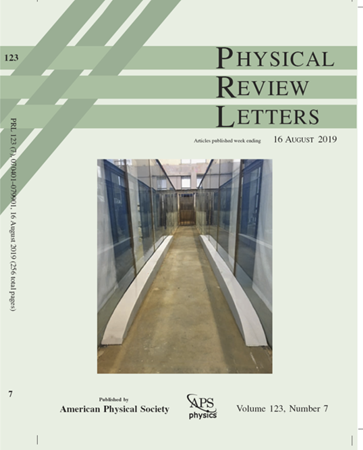光学镊子用于两种Rydberg分子的单独组装
IF 8.1
1区 物理与天体物理
Q1 PHYSICS, MULTIDISCIPLINARY
引用次数: 0
摘要
我们提出了一种研究Rydberg分子的新方法,即利用光镊展示Rb*Cs Rydberg分子的形成和表征。通过Rb和Cs的单原子检测,我们通过两种物质的相关损失来观察分子的形成,并以单粒子分辨率研究分子的形成动力学。我们利用镊子强度控制原子对的相对波函数来控制原子间距离,优化与分子状态的耦合,并探索镊子对这些状态的影响。此外,我们证明了分子与被困在单独镊子中的原子的关联,为多原子分子的状态选择性组装铺平了道路。观察到的结合能、分子排列和键长与理论一致。我们的方法广泛适用于Rydberg镊子平台,扩大了可用分子系统的范围,并使Rydberg分子集成到现有的量子科学平台中。2025年由美国物理学会出版本文章由计算机程序翻译,如有差异,请以英文原文为准。
Individual Assembly of Two-Species Rydberg Molecules Using Optical Tweezers
We present a new approach to investigating Rydberg molecules by demonstrating the formation and characterization of individual Rb*Cs Rydberg molecules using optical tweezers. By employing single-atom detection of Rb and Cs, we observe molecule formation via correlated loss of both species and study the formation dynamics with single-particle resolution. We control the interatomic distances by manipulating the relative wave function of atom pairs using the tweezer intensity, optimizing the coupling to molecular states and exploring the effect of the tweezer on these states. Additionally, we demonstrate molecule association with atoms trapped in separate tweezers, paving the way for state-selective assembly of polyatomic molecules. The observed binding energies, molecular alignment, and bond lengths are in good agreement with theory. Our approach is broadly applicable to Rydberg tweezer platforms, expanding the range of available molecular systems and enabling the integration of Rydberg molecules into existing quantum science platforms. Published by the American Physical Society 2025
求助全文
通过发布文献求助,成功后即可免费获取论文全文。
去求助
来源期刊

Physical review letters
物理-物理:综合
CiteScore
16.50
自引率
7.00%
发文量
2673
审稿时长
2.2 months
期刊介绍:
Physical review letters(PRL)covers the full range of applied, fundamental, and interdisciplinary physics research topics:
General physics, including statistical and quantum mechanics and quantum information
Gravitation, astrophysics, and cosmology
Elementary particles and fields
Nuclear physics
Atomic, molecular, and optical physics
Nonlinear dynamics, fluid dynamics, and classical optics
Plasma and beam physics
Condensed matter and materials physics
Polymers, soft matter, biological, climate and interdisciplinary physics, including networks
 求助内容:
求助内容: 应助结果提醒方式:
应助结果提醒方式:


